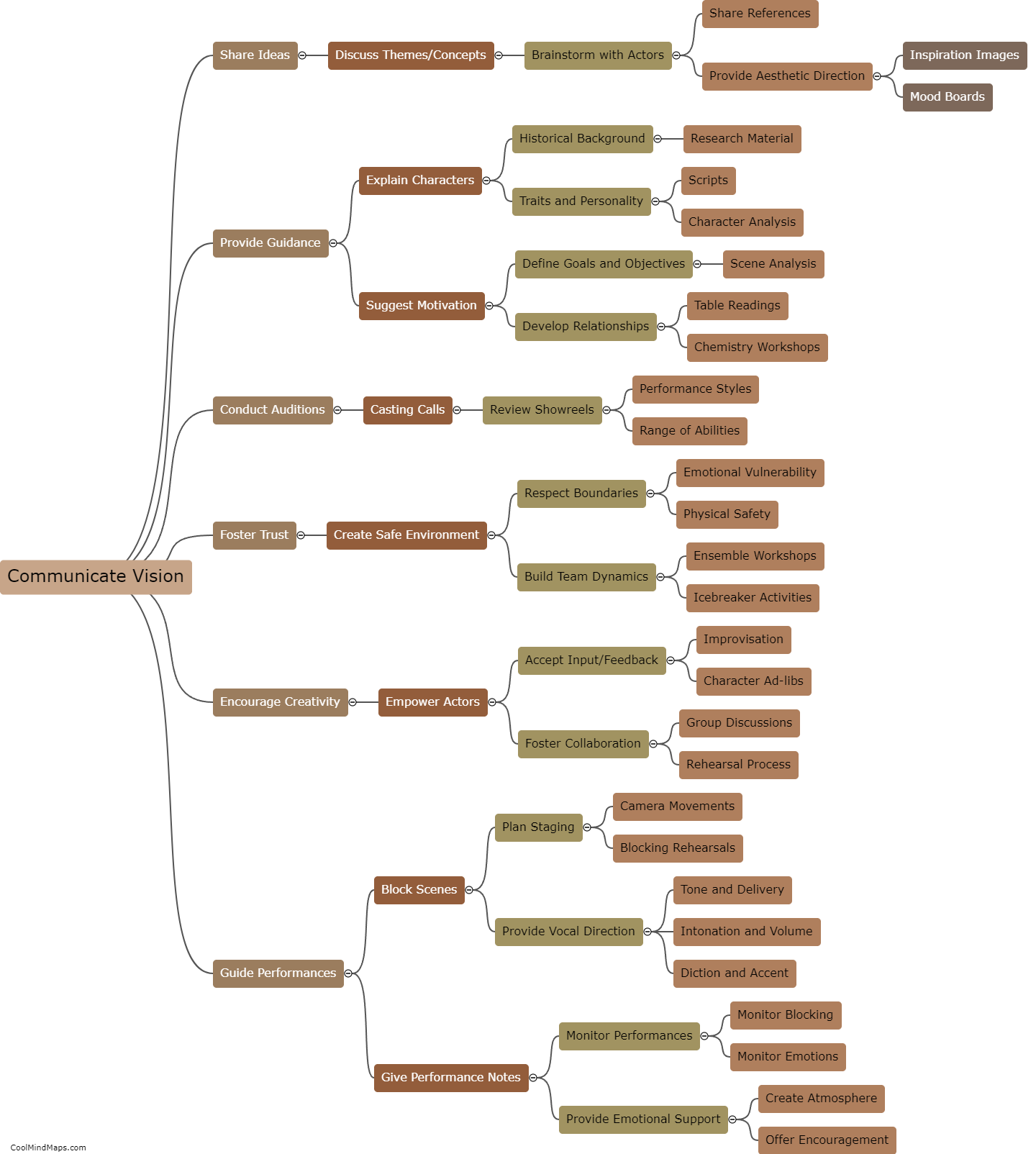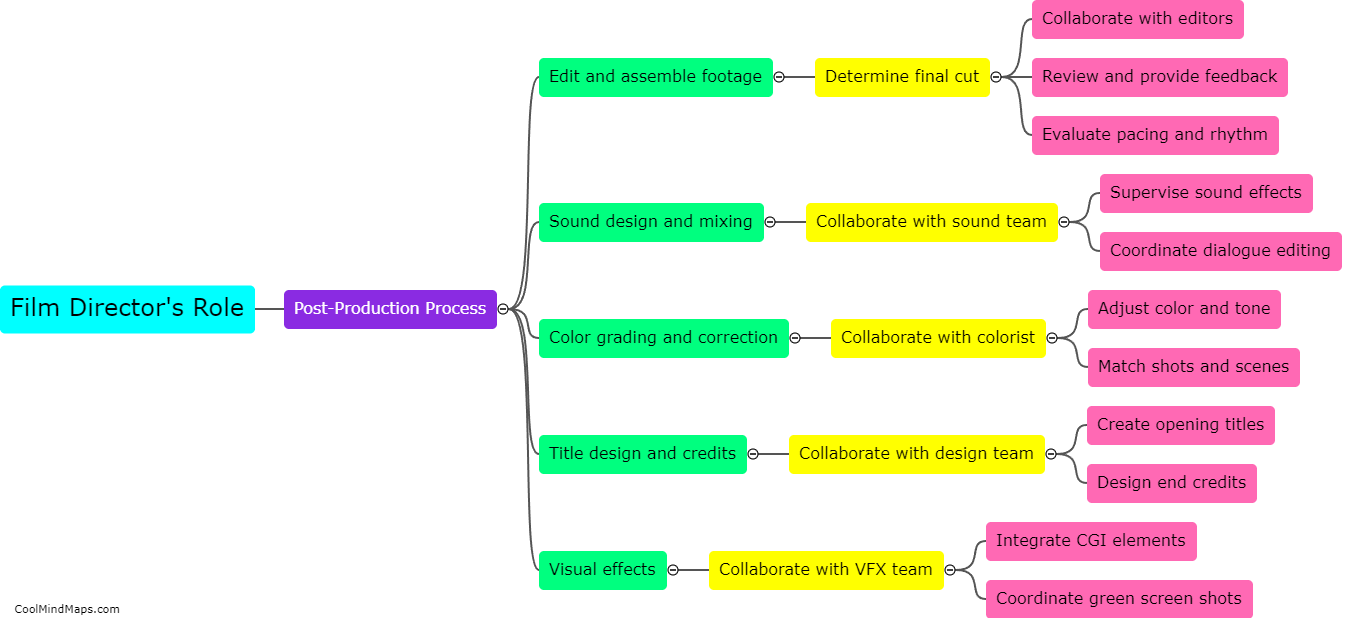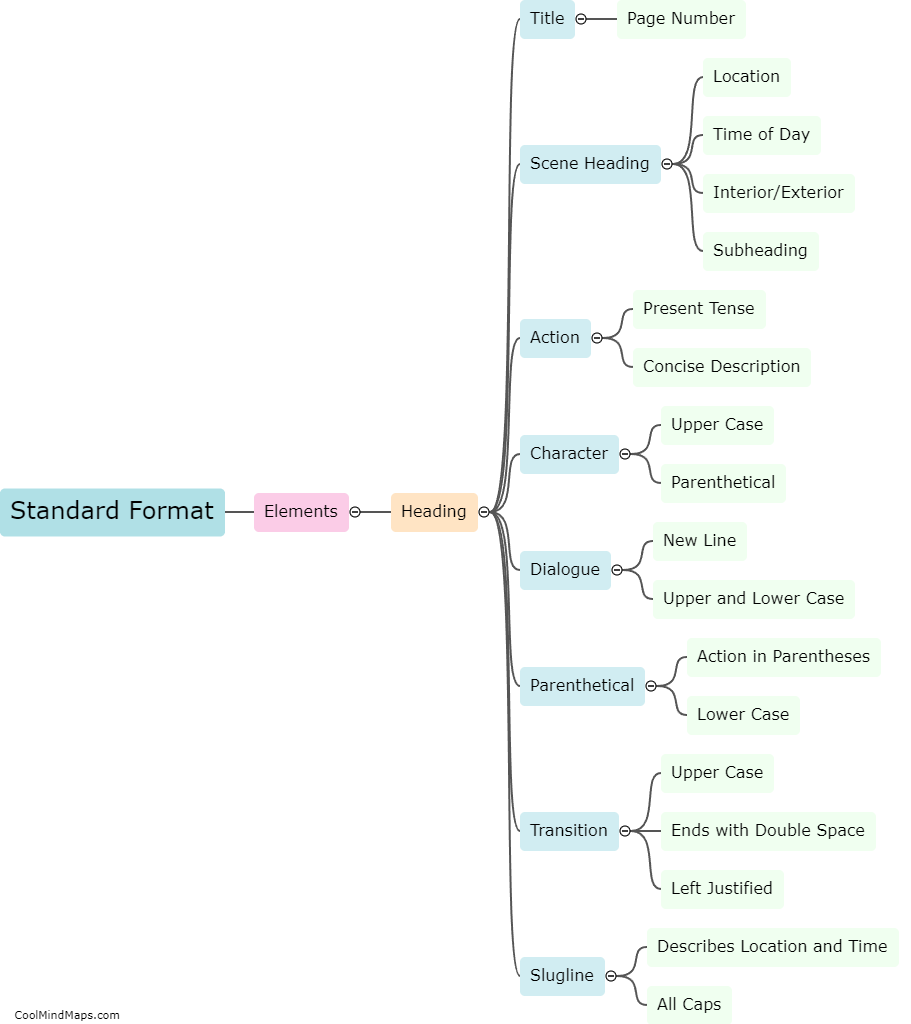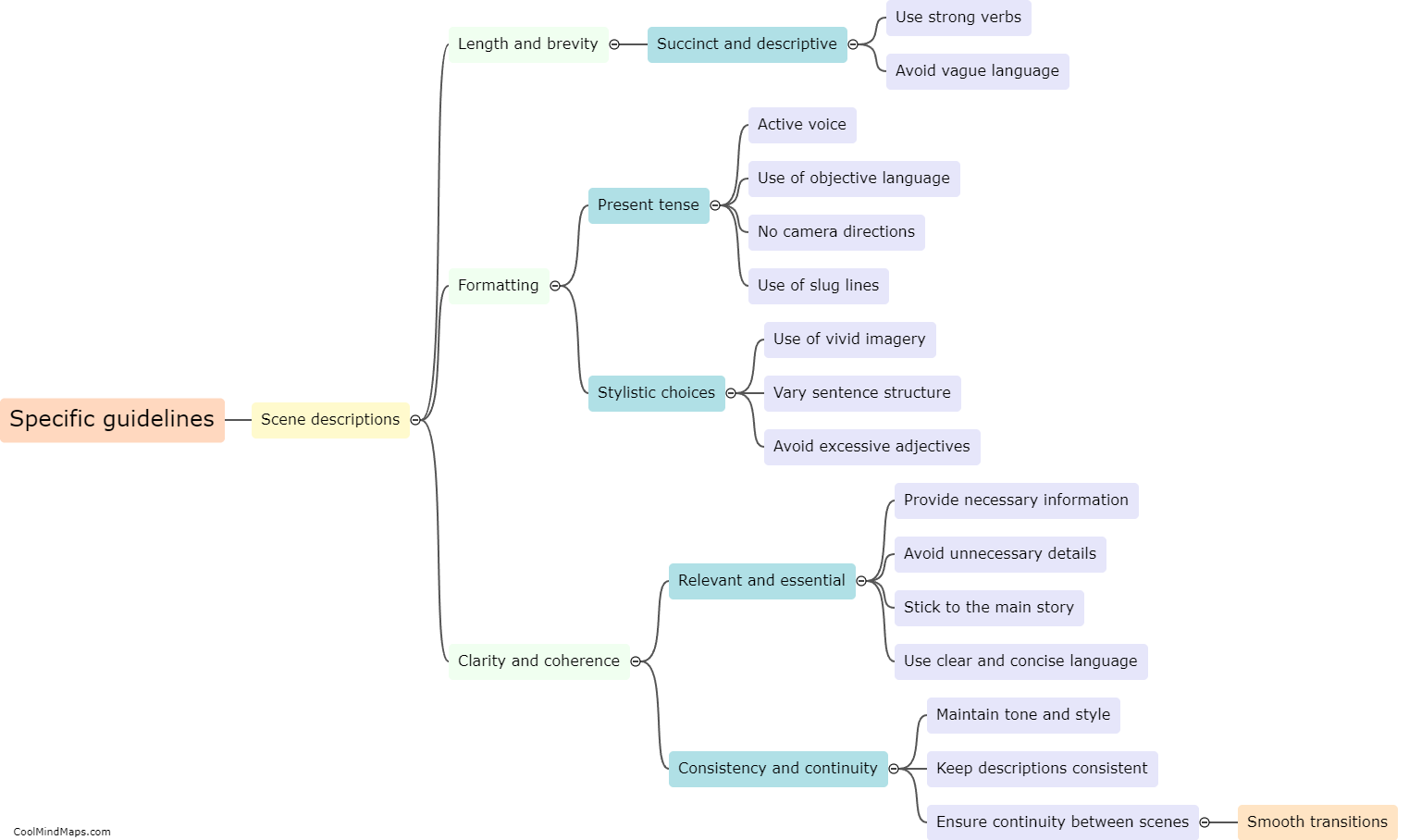How should transitions be formatted in a screenplay?
Transitions in a screenplay serve as important cues for the reader, indicating changes in time, location, or perspective. To format transitions effectively, the common convention is to write them in all capital letters, placed on the right side of the page. Some commonly used transitions include CUT TO:, DISSOLVE TO:, FADE IN:, FADE OUT:, and TRANSITION TO:. By using these cues, the writer can guide the reader smoothly through the story and ensure that the visual and emotional flow of the screenplay is maintained. However, it is important not to overuse transitions or rely too heavily on them, as they should only be included when necessary for clarity and storytelling purposes.
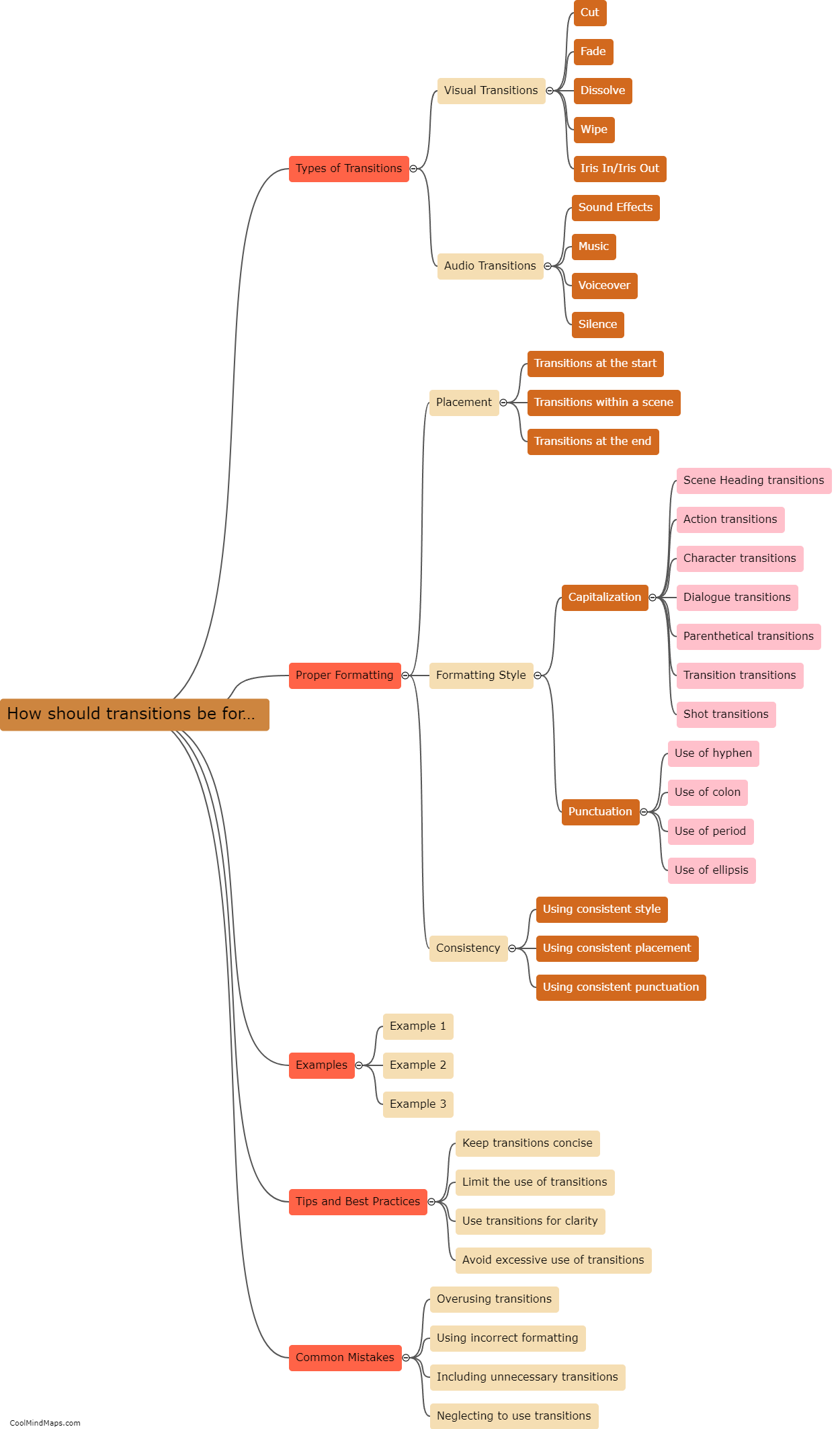
This mind map was published on 20 December 2023 and has been viewed 92 times.




